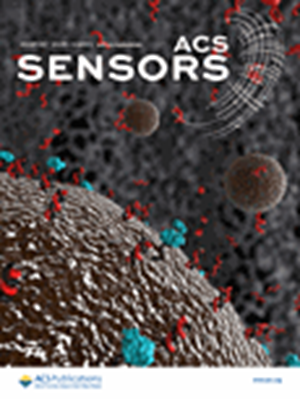Dual Gatekeepers-Driven Signal Amplification Strategy for Precise Detection and Modulation of Ovarian Cancer Exosome Subtypes.
IF 9.1
1区 化学
Q1 CHEMISTRY, ANALYTICAL
引用次数: 0
Abstract
Early detection of ovarian cancer remains a significant challenge due to the lack of symptoms in its early stages and the overlap in protein expression patterns between malignant and benign conditions. In this study, we introduce a dual gatekeepers-driven signal amplification strategy for the highly sensitive detection and precise modulation of ovarian cancer-derived exosome subtypes. By employing CA125 and carcinoembryonic antigen (CEA) aptamers as dual gatekeepers, this strategy selectively activates functional regions on exosome membranes, triggering the opening of hairpin DNA structures (HP) upon recognition of specific protein patterns. The opened HP then initiate an exonuclease III-powered DNA walking system and nucleic acid-stabilized Ag0 nanoclusters (AgNCs), significantly amplifying the detection sensitivity. This approach not only enables the specific differentiation of malignant exosomes from benign ones but also facilitates the distinction between early and late-stage tumors. Moreover, it regulates the interaction between ovarian cancer-derived exosomes and target cells, promoting the exchange of biological information and material transfer. This innovative strategy serves as a powerful tool for early tumor detection while offering valuable insights into the interactions between exosome subtypes and tumor cells. Its application establishes a strong theoretical foundation for investigating the roles of exosomes in intercellular communication, immune evasion, and other biological processes, with far-reaching implications for cancer immunotherapy and related research.双守门人驱动的信号放大策略用于卵巢癌外泌体亚型的精确检测和调节。
早期发现卵巢癌仍然是一项重大挑战,因为在其早期阶段缺乏症状,并且在恶性和良性条件之间的蛋白质表达模式重叠。在这项研究中,我们引入了一种双守门人驱动的信号放大策略,用于卵巢癌衍生的外泌体亚型的高灵敏度检测和精确调节。通过使用CA125和癌胚抗原(CEA)适体作为双重守门人,该策略选择性地激活外泌体膜上的功能区,在识别特定蛋白质模式时触发发夹DNA结构(HP)的打开。打开的HP随后启动了外切酶iii驱动的DNA行走系统和核酸稳定的Ag0纳米簇(agnc),显著提高了检测灵敏度。这种方法不仅可以区分恶性外泌体和良性外泌体,还可以区分早期和晚期肿瘤。此外,它还调节卵巢癌源性外泌体与靶细胞之间的相互作用,促进生物信息的交换和物质转移。这种创新策略作为早期肿瘤检测的有力工具,同时为外泌体亚型和肿瘤细胞之间的相互作用提供了有价值的见解。它的应用为研究外泌体在细胞间通讯、免疫逃避等生物学过程中的作用奠定了坚实的理论基础,对癌症免疫治疗及相关研究具有深远的意义。
本文章由计算机程序翻译,如有差异,请以英文原文为准。
求助全文
约1分钟内获得全文
求助全文
来源期刊

ACS Sensors
Chemical Engineering-Bioengineering
CiteScore
14.50
自引率
3.40%
发文量
372
期刊介绍:
ACS Sensors is a peer-reviewed research journal that focuses on the dissemination of new and original knowledge in the field of sensor science, particularly those that selectively sense chemical or biological species or processes. The journal covers a broad range of topics, including but not limited to biosensors, chemical sensors, gas sensors, intracellular sensors, single molecule sensors, cell chips, and microfluidic devices. It aims to publish articles that address conceptual advances in sensing technology applicable to various types of analytes or application papers that report on the use of existing sensing concepts in new ways or for new analytes.
 求助内容:
求助内容: 应助结果提醒方式:
应助结果提醒方式:


